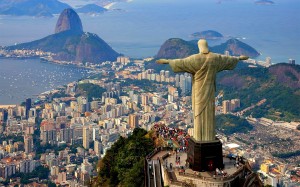 Population of Brazil 2014
Population of Brazil 2014
Based on the total number of births, total number of deaths, net migration rates, and the population of 2013, the current population of the Federative Republic of Brazil is estimated to be about 201,398,858. As a result, Brazil is the fifth-most populous country in the world, behind Indonesia, but ahead of Pakistan. The current population indicates a growth of about 2,077,858 or a population growth rate of about 1.04%. Based on the total land area and the total population, the population density of Brazil in 2014 is about 23.65 people per square kilometer or 61.26 people per square mile.
Geography of Brazil 2014
Brazil has a total area of 8,514,876 square kilometers or 3,287,612 square miles, making it the fifth largest country in the world in terms of area. Due to its larges size, it borders every country in South America, except Ecuador and Chile. Brazil is located along the equator, which is the cause of much of its climate. Geographically, the northern portion of the country is the lower, flatter region. It is made up of rolling terrains and low, rounded hills. However, the southern region is made up of mountain ranges and ridges. Some mountain ranges include the Serra do Mar and the Mantiquiera. Some of the major rivers in the country include the Amazon, which is the world’s second longest river, and the Parana River.
Climate of Brazil 2014
There are five major climate regions in Brazil: equatorial, tropical, semiarid, highland tropical, temperate, and subtropical. These drastically different regions are the reasons for the existence of both semiarid deserts and equatorial rainforests. However, the northern portion of the country is made up of mostly equatorial climates. The average temperature in this region is about 77°F, but there is a large variation in temperatures throughout the day. In terms of rainfall, the northeast receives extreme seasonal rainfall, but the semiarid region tends to have, on average, less than 32 inches of rainfall per year. However, in regions south of Bahia, rain tends to fall consistently throughout the year. Lastly, the southern region tends to experience cooler temperatures and climates, sometimes even some frost and snow.
Government of Brazil 2014
The political system in Brazil is considered to be a democratic republic. Founded upon the principles of sovereignty, citizenship, dignity of human beings, social values of labor and freedom of enterprise, and political pluralism, the government is made up of three separate branches: executive, legislative, and judicial. The members of the executive and legislative branches are directly elected, while the members of the judicial branch are appointed after passing an exam. The four main political parties are the Workers’ Party, Brazilian Social Democracy Party, Brazilian Democratic Movement Party, and the Democrats. Voting in the elections is required for all literate citizens from ages 18 to 70. Lastly, the Brazilian Constitution is considered to be a very important document in the government and political system.
Transportation in Brazil 2014
The most common form of transportation for both people and freight is considered to be road travel. As of 2010, there was almost 2 million kilometers of roads in Brazil. Of the approximate 2 million kilometers of roads, about only 200,000 kilometers of roads are actually paved. Another important form of freight transportation is waterway transportation. In total, there are thirty-six deep-water ports. The usage of railways and trains has decreased over the years and some railways have even been shut down. Lastly, there are approximately 2,500 airports in all of Brazil, which gives it the second highest number of airports behind the United States of America. The largest airport in Brazil is the Sao Paulo-Guarulhos International Airport.
Health Care in Brazil 2014
As of 1988, the Brazilian Constitution guarantees that everyone legally in Brazil has the right to access medical care and coverage. As a result, there is a public national health system provided by the government. The public health care system is free to anyone that is legally in Brazil. This coverage includes free doctor’s visits, prescription drugs, hospitalization, and even surgeries. Although there is a free, public system, there also exists a private system. People can choose to use the private system if they want, but it is not free to the public. Private health-care providers can receive subsidies from the government to help lower costs for the patient. Also, even if you have a private health plan and you wish to use the public system, you can still use the resources and services of the public system. Lastly, some health issues throughout the country include poor sanitation and drinking water, malnutrition, high infant mortality rates, and high disease and illness rates.
 Economy of Brazil 2014
Economy of Brazil 2014
Brazil has the largest economy in all of Latin America and the seventh largest economy in the world. In 2014, according to the International Monetary Fund, the Gross Domestic Product per capita is $12,528, which ranks 77th in the world. The economy is supposed to grow to be in the top five economies in the world based on the projections of growth in Gross Domestic Product. It has the sixth largest work force in the world, totaling 107 million workers. Some of the major sectors of the economy include agriculture, mining, manufacturing, and service. Lastly, Brazil is considered to have the fourth largest car market in the world.
Education in Brazil 2014
The Brazilian Constitution guarantees education for every citizen of Brazil, but also establishes that it is the supreme authority in terms of education. Each state and territory can make some extra regulations in regards to their specific schools, but the federal government must approve of the regulations. There are three main levels of education: fundamental, intermediate, and higher education. The higher education system is made up of undergraduate and graduate school. Education is required for every Brazilian citizen from the ages of 7 years to 14 years. There is a common core curriculum, along with the allowance for specifics to certain schools. The common core includes Portuguese, History, Geography, Physics, Biology, Science, and Mathematics. Lastly, the set school year involves 200 school days, even though the minimum is only 180 school days, which does not include test and exam days.
Language in Brazil 2014
Based on the Brazilian Constitution, Portuguese is the official language of Brazil. Portuguese is spoken among almost the entire population as it appears in virtually every aspect of society. Because it is the only Portuguese-speaking country in Latin America, this difference gives Brazil a special identity and culture that separates it form any other Latin American country. In 2002, Brazilian Sign Language was officially recognized as a Brazilian language as well, in order to accommodate for the hearing impaired citizens of the country. In fact, the language is taught as a part of the education and speech and language pathology curricula. Schools and hospitals are required to provide equal access and assistance for the hearing impaired. Despite these two official languages, there are countless numbers of Amerindian languages spoken throughout the country, however.
Brazil’s Geographic Challenge
Other Resources



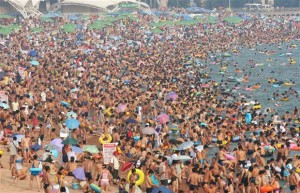 Population of China 2014
Population of China 2014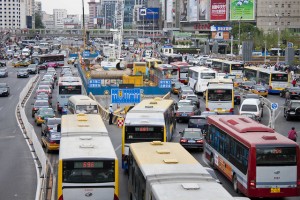 Transportation in China 2014
Transportation in China 2014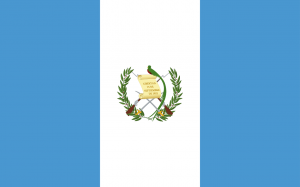 Guatemala Population 2013
Guatemala Population 2013 Colombia Population 2013
Colombia Population 2013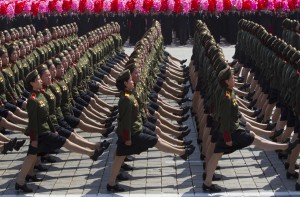 North Korea Population 2013
North Korea Population 2013